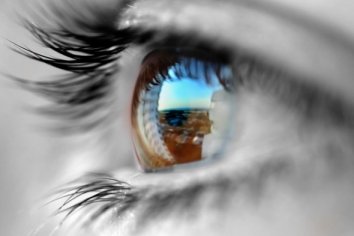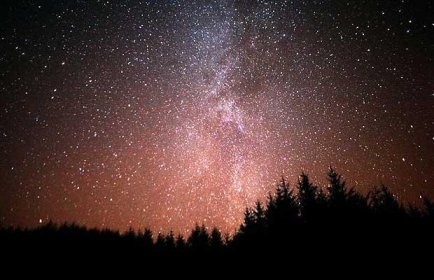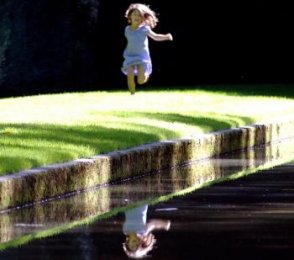 |
Thursday, 12 April 2012
How Tai Chi in later life is good for the heart
Mood:
 a-ok
Topic: Tai Chi a-ok
Topic: Tai Chi

Practising the ancient martial art of tai chi can boost elderly people's hearts, a study has found. Older subjects who regularly performed the traditional Chinese mind-body exercise now enjoyed worldwide were less likely to suffer high blood pressure and were physically stronger. Researchers said a work-out which can achieve both good heart function and muscle power 'would be a preferred mode of training' for this group of society. Heart pulse measurements showed it improved expansion and contraction of the arteries - known as arterial compliance - and increased knee muscle strength. Full Story from dailymail.co.uk
Posted by Neil Bartlett DHyp M.A.E.P.H
at 01:01 MEST
Updated: Thursday, 12 April 2012 01:52 MEST
Wednesday, 11 April 2012
Evidence Builds That Meditation Strengthens the Brain
Mood:
 happy
Topic: Meditation happy
Topic: Meditation

Earlier evidence out of UCLA suggested that meditating for years thickens the brain (in a good way) and strengthens the connections between brain cells. Now a further report by UCLA researchers suggests yet another benefit. Eileen Luders, an assistant professor at the UCLA Laboratory of Neuro Imaging, and colleagues, have found that long-term meditators have larger amounts of gyrification ("folding" of the cortex, which may allow the brain to process information faster) than people who do not meditate. Full Story from sciencedaily.com
Posted by Neil Bartlett DHyp M.A.E.P.H
at 01:01 MEST
Updated: Wednesday, 11 April 2012 01:11 MEST
Tuesday, 10 April 2012
Will 10 year-olds be popping pills to live longer?
Mood:
 d'oh
Topic: Longevity d'oh
Topic: Longevity

Life expectancy has changed dramatically in a century. In 1908, half the UK population was dead by 60 and in 1948, when the contributory state pension was introduced, half the population was dead by the age of 72. Falling mortality rates, as a result of advances in science and medicine, mean the average UK man and woman can expect to live into their 80s, perhaps even to the age of 100, but what will the quality of our lives be like? And will we have to resort to more and more drugs to keep us alive? The longer we live, the more prone we are to chronic diseases such as heart disease, diabetes, stroke and cancer. Drugs can help control and reduce the symptoms of these conditions and increase our longevity, but the danger is that we will come to rely on them too much. Full Story from BBC
Posted by Neil Bartlett DHyp M.A.E.P.H
at 01:01 MEST
Updated: Tuesday, 10 April 2012 01:07 MEST
Monday, 9 April 2012
Our Souls Are In Our Eyes, Psychologists Claim
Mood:
 happy
Topic: Spiritualism happy
Topic: Spiritualism

As the cheesy pickup line suggests, your eyes may really be the window to your soul. According to a new study by Yale University psychologists, most people intuitively feel as if their "self" — otherwise known as their soul, or ego — exists in or near their eyes. In three experiments, the researchers probed preschoolers' and adults' intuitions about the precise location of the self in the body. The participants were shown pictures of cartoon characters, and in each picture a small object (a buzzing fly or snowflake) was positioned near a different section of the character's body (face or torso or feet, etc.), always at the same distance away. The study participants were then asked which pictures showed the object closest to the body, the hypothesis being that people would interpret the object as closest when it was near what they intuitively believed to be the soul's location. Full Story from livescience.com
Posted by Neil Bartlett DHyp M.A.E.P.H
at 01:01 MEST
Updated: Monday, 9 April 2012 01:04 MEST
Sunday, 8 April 2012
UFO Encounter Revealed After Almost 40 Years By Ex-Military Pilot
Mood:
 lyrical
Topic: UFO's & Aliens lyrical
Topic: UFO's & Aliens
On the night of Feb. 6, 1975, Marine Reserve Squadron Capt. Larry Jividen was piloting a T-39D Sabreliner (see image above) combat trainer and utility aircraft with five Naval officer pilots on board for a special training flight. He didn't know the evening would evolve into a game of "tag" with an unidentified flying object. Jividen hasn't spoken about that experience from nearly 40 years ago -- until now. The nine-year Marine Corps officer -- and later commercial airline pilot -- had taken off at twilight for a two-hour roundtrip that began and ended at the Naval Air Station in Pensacola, Fla. "At about 9 o'clock, we were descending from a high altitude -- around 33,000 feet -- and I looked off to the right side of the airplane where I saw a solid red light at our 1:00 o'clock position and altitude," Jividen told The Huffington Post.
Posted by Neil Bartlett DHyp M.A.E.P.H
at 01:01 MEST
Updated: Sunday, 8 April 2012 01:37 MEST
Saturday, 7 April 2012
The Supernatural Supermarket
Mood:
 d'oh
Topic: Paranormal d'oh
Topic: Paranormal
Posted by Neil Bartlett DHyp M.A.E.P.H
at 01:01 MEST
Updated: Saturday, 7 April 2012 08:29 MEST
Dudley Dorito Shaped UFO Spotted Again Over York, England
Mood:
 chatty
Topic: UFO's & Aliens chatty
Topic: UFO's & Aliens
The famous "Dudley Dorito" UFO was spotted again in England, this time over York, as it floated above a forest. What is it? The video, filmed on a bright day and through a thicket of trees, is of exceptional clarity and high quality. The witness is clearly surprised and struggles to keep the unidentified flying object in sight. This kind of aircraft has been caught on tape several times before, always displaying a curious, off-center dot on the bottom hull of the triangular shape. It glides slowly through the air at low altitude without making a sound. If the video is a hoax, it's an extremely good one. Full Story from gather.com
Posted by Neil Bartlett DHyp M.A.E.P.H
at 01:01 MEST
Updated: Friday, 6 April 2012 20:54 MEST
Thursday, 5 April 2012
Seeing in the Dark
Mood:
 bright
Topic: Space bright
Topic: Space

The awe-inspiring sight of a sky full of stars can render us speechless—and understandably so. Two very different entities are involved, and they're both rather mysterious.
At one extreme stands the individual observer, peering through a telescope or simply staring up at the stars. To ask who is doing the observing is to raise one of the oldest questions of philosophy. "Know yourself," said Socrates, although he made the mistake of assuming that one had to accomplish this before trying to learn about the rest of the universe. (Rejecting a scientific account of the winds, Socrates said, "I can't as yet 'know myself' ... and so long as that ignorance remains it seems to me ridiculous to inquire into extraneous matters.") Actually, we humans have since learned more about ourselves by studying the wider world—by investigating the processes that created life and shaped its evolution—than we ever did through introspection, and we see those processes written large in the depths of the sky.
At the other extreme stands the wider universe itself, unimaginably vast and yet, as Einstein said, "at least partially accessible to our inspection and thinking." Notoriously indifferent to the human condition, the universe is also curiously involving. We feel that we belong to it, or in it—that the blades of grass underfoot are as much a part of the universe as the blazing stars seen through the eyepiece. We may love this sensation, but as it says in the film, "it can be hard to put love into words." So this is a film in which stargazers try to describe an ineffable experience, and invite viewers to share their wordless awe.
To convey a sense of that experience, we departed from the conventions of science filmmaking in several ways. The first step was to do away with a conventional "presenter." I seldom talk to the camera in this film, since when you go out to look through a telescope you may appreciate a guide's whispering into your ear but you don't want him standing between you and the stars while he gives you a lecture. Our production team also devoted a lot of effort to depicting the stargazing experience in ways that closely replicate the real thing: Our aim was not just to inform our viewers (although we hope we've done that) but to incite them to get outside at night and have a look for themselves. After all, the point of stargazing is not just to see things as other have seen them, but to have an original and memorable experience all your own—even if you cannot describe it all.
The grandeur of nature on the cosmic scale tends to beggar familiar concepts nurtured here on Earth, and Seeing in the Dark is ultimately a meditation, as the final line of the voice-over narration puts it, on "time, music, and the stars."
Time inevitably figures in stargazing, since everything we see in the night sky belongs to the past. This relationship is embodied in the "light year," a standard cosmic yardstick defined as the distance light, moving through the vacuum of space at 186,000 miles per second, travels in one year—nearly six trillion miles. We see the Moon as it was 1.3 seconds ago, bright stars as they were decades to centuries ago, and galaxies as they were millions of years ago. To confront light older than the human species and even the Earth may be disconcerting at first—big time, like big space, making the us feel inconsequential by comparison—but in the end it can be oddly reassuring to consider the fleeting span of human life in a cosmic context. We may be only actors strutting on a stage, but the stage is big and the play has been going on for a very long time.
Seeing in the Dark is structured on three contrasting scales of time. On one level, the entire film takes place in the course of a single night at Rocky Hill Observatory, starting just before sunset and ending just after dawn. On a second level, it outlines my own experiences with stargazing, starting at age twelve and lingering on the days when I was around seventeen years old and was observing with fellow members of our rather grandly named Key Biscayne Astronomical Association. My son, Patrick, plays me at that age, then returns as himself at the close of the film, in a dialog that suggests how the accumulation of scientific knowledge can overcome the limitations of human mortality by passing knowledge down through the generations. This dynamic is reprised in the film's other two historical recreations, showing Edward Emerson Barnard and William Herschel in the nineteenth and eighteenth centuries respectively, each of whom got into stargazing as teenagers and went on to make discoveries that continue to inform us today. On a third level the film moves out in space and back in time, starting with nearby planets and then enlarging its frame of reference to take in our galaxy and, finally, the Andromeda galaxy, more than two million light years away—a time frame that encompasses the entire career of the human species.
Music, like cinema, is an art form intimately bound up with the passage of time: A still photo may do justice to a painting or a poem, but you cannot "freeze" a movie or a piece of music and get much out of it. Astronomers have long associated music with the sky—from Pythagoras, who in the sixth century BC suggested that an underlying harmony, a "music of the spheres," defined the motions of the planets, to recent work on the internal dynamics of the Sun that liken it to a gigantic gong. Seeing in the Dark features two musicians turned amateur astronomer—William Herschel in the eighteenth century and Michael Koppelman today. It also touches on my own involvement in music, which resulted among other things in my producing the gold record carried aboard the twin Voyager space probes. (The Voyagers are now approaching the edge of the solar system, thereafter to wander forever among the stars.) The blues music that meant so much to me as a young man was a kind of time capsule, and the ability of music to answer to the beauty of the night sky in ways that may transcend the scope of words is evinced in the original musical score created for the film by Mark Knopfler and Guy Fletcher.
The stars appeal to the eye in ways never before rendered so accurately in a film. Their colors (which result from their temperatures), their twinkling (produced by Earth's atmosphere), and the imposing appearance of thousands of stars arrayed across great swathes of the night sky cannot be captured by any existing motion-picture camera, so we drew on a wide range of art and modern technology to bring the stars to life on the screen. For naked-eye skies we started with the still photographs of Akira Fujii, regarded as the world's foremost wide-angle astrophotographer, then "twinkled" their brighter stars by applying pseudorandom algorithms developed at the digital-processing houses Form in Los Angeles and Video Arts in San Francisco and by our special effects artist, Don Davis. (The digital post-processing wizards started with theoretical models, while Don simply made de-focused video images of Sirius, the brightest star in the sky, then reverse-engineered its twinkles to apply them to the stars in the photos.) Telescopic views of brighter objects such as the Moon and the planets were shot with an HD camera through a large backyard telescope by the astrophotographers Kenneth Crawford and Michael A. Mayda. Dimmer telescopic objects, from star clusters and nebulae to galaxies, were rendered by taking thousands of stills which were then run as frames of motion-picture footage—thirty frames per second of on-air time—or by "twinkling" still images. Here the key contributors were Jack Newton, Mike Palermiti, and our cinematographer, Francis Kenny, who also post-processed the timelapse footage of stars rising over Rocky Hill Observatory that opens the film's final scenes.
Several zoom shots seen in the film would not have been possible a decade ago. The long "pull" on the Cone nebula seen over the Einstein quotation in the Cape Florida beach sequence exploited the high resolution of Rob Gendler's painstakingly assembled wide-sky photomosaic of the Milky Way in the constellation Monoceros. Our long "push" into the Orion nebula begins with a timelapse photo of the entire constellation, shot on a digital camera piggybacked on the 18-inch Newtonian telescope at Rocky Hill, then dissolves into a Rob Gendler mosaic and then into a Don Davis effect in which we fly through the center of the nebula itself. Don's special effects—hovering over the rings of Saturn, moving out among the stars to spot extrasolar planets, witnessing the explosion of a star eleven billion years ago, and flying over the entire Andromeda galaxy—capture something of the "being there" sensation familiar to seasoned stargazers whose knowledge of astronomical objects lets them get the most out of their hours at the telescope in much the same way that a baseball game looks much deeper and more involving to a knowledgeable fan than to a novice.
Stargazing has been a fascination of mine for a half century. (As it happened we started principle cinematography on the film exactly fifty years after I acquired my first telescope.) To do justice to such a beautiful subject, at once personal and universal, I assembled a dream team of creative collaborators. Among them were cinematographer Francis Kenny, who combined his years of feature-film shooting with his extensive experience in high-definition video to explore new visual territories; our editor, Lisa Day, who made the film dance; our cheerful and resourceful director, Nigel Ashcroft, who brought the script to life on location; the sound designer, Kate Hopkins, whose grounding in natural-history filmmaking did so much to draw earth and sky together; and the sound mixer, Walter Murch, a three-time Academy Award winner who threw himself into the project as if it were his first. In all, more than a hundred people worked on Seeing in the Dark. If you like it, they deserve the credit. If not, I'm the one to blame. by Timothy Ferri Source - dailygood.org
Posted by Neil Bartlett DHyp M.A.E.P.H
at 01:01 MEST
Updated: Thursday, 5 April 2012 01:12 MEST
Wednesday, 4 April 2012
Children do better at school when told that failure is a part of learning
Mood:
 bright
Topic: Education bright
Topic: Education

Mothers who push their children to achieve at all costs might actually be harming their children's chances. Children perform best when they are told that failure - and trying again - is a normal part of learning. Being told that failure is not an option - and that failures are inferior - leaves youngsters too afraid to deal with and master new material. ‘We focused on a widespread belief that failure equals intellectual inferiority,’ said Frederique Autin, a postdoctoral researcher at the University of Poitiers in Poitiers, France. ‘By being obsessed with success, students are afraid to fail, so they are reluctant to take difficult steps to master new material. Full Story from dailymail.co.uk
Posted by Neil Bartlett DHyp M.A.E.P.H
at 01:01 MEST
Updated: Wednesday, 4 April 2012 01:18 MEST
Tuesday, 3 April 2012
The Short but Powerful Guide to Finding Your Passion
Mood:
 chatty
Topic: Inspirational chatty
Topic: Inspirational

by Leo Babauta “The supreme accomplishment is to blur the line between work and play.” - Arnold Toynbee Following your passion can be a tough thing. But figuring out what that passion is can be even more elusive.
I’m lucky — I’ve found my passion, and I’m living it. I can testify that it’s the most wonderful thing, to be able to make a living doing what you love.
And so, in this little guide, I’d like to help you get started figuring out what you’d love doing. This turns out to be one of the most common problems of many Zen Habits readers — including many who recently responded to me on Twitter.
This will be the thing that will get you motivated to get out of bed in the morning, to cry out, “I’m alive! I’m feeling this, baby!”. And to scare your family members or anyone who happens to be in yelling distance as you do this.
This guide won’t be comprehensive, and it won’t find your passion for you. But it will help you in your journey to find it. Here’s how.
1. What are you good at? Unless you’re just starting out in life, you have some skills or talent, shown some kind of aptitude. Even if you are just starting out, you might have shown some talent when you were young, even as young as elementary school. Have you always been a good writer, speaker, drawer, organizer, builder, teacher, friend? Have you been good at ideas, connecting people, gardening, selling? Give this some thought. Take at least 30 minutes, going over this question — often we forget about things we’ve done well. Think back, as far as you can, to jobs, projects, hobbies. This could be your passion. Or you may have several things. Start a list of potential candidates.
2. What excites you? It may be something at work — a little part of your job that gets you excited. It could be something you do outside of work — a hobby, a side job, something you do as a volunteer or a parent or a spouse or a friend. It could be something you haven’t done in awhile. Again, think about this for 30 minutes, or 15 at the least. If you don’t, you’re probably shortchanging yourself. Add any answers to your list.
3. What do you read about? What have you spent hours reading about online? What magazines do you look forward to reading? What blogs do you follow? What section of the bookstore do you usually peruse? There may be many topics here — add them to the list.
4. What have you secretly dreamed of? You might have some ridiculous dream job you’ve always wanted to do — to be a novelist, an artist, a designer, an architect, a doctor, an entrepreneur, a programmer. But some fear, some self-doubt, has held you back, has led you to dismiss this idea. Maybe there are several. Add them to the list — no matter how unrealistic.
5. Learn, ask, take notes. OK, you have a list. Pick one thing from the list that excites you most. This is your first candidate. Now read up on it, talk to people who’ve been successful in the field (through their blogs, if they have them, or email). Make a list of notes of things you need to learn, need to improve on, skills you want to master, people to talk to. Study up on it, but don’t make yourself wait too long before diving into the next step.
6. Experiment, try. Here’s where the learning really takes place. If you haven’t been already, start to do the thing you’ve chosen. Maybe you already are, in which case you might be able to skip to the next step or choose a second candidate to try out. But if you haven’t been, start now — just do it. It can be in the privacy of your own home, but as quickly as possible, make it public however you can. This motivates you to improve, it gets you feedback, and your reputation will improve as you do. Pay attention to how you feel doing it — is it something you look forward to, that gets you excited, that you love to share?
7. Narrow things down. I recommend that you pick 3-5 things from your list, if it’s longer than that, and do steps 5 & 6 with them. This could take month, or perhaps you’ve already learned about and tried them all out. So now here’s what you need to ask yourself: which gets you the most excited? Which of these can produce something that people will pay for or get excited about? Which can you see yourself doing for years (even if it’s not a traditional career path)? Pick one, or two at the most, and focus on that. You’re going to do the next three steps with it: banish your fears, find the time, and make it into a career if possible. If it doesn’t work out, you can try the next thing on your list — there’s no shame in giving something a shot and failing, because it’ll teach you valuable lessons that will help you to be successful in the next attempt.
8. Banish your fears. This is the biggest obstacle for most people – self-doubt and fear of failure. You’re going to face it and banish it. First, acknowledge it rather than ignoring or denying it. Second, write it down, to externalize it. Third, feel it, and be OK with having it. Fourth, ask yourself, “What’s the worst that can happen?” Usually it’s not catastrophic. Fifth, prepare yourself for doing it anyway, and then do it. Take small steps, as tiny as possible, and forget about what might happen — focus on what actually is happening, right now. And then celebrate your success, no matter how small.
9. Find the time. Don’t have the time to pursue this passion? Make the time, dammit! If this is a priority, you’ll make the time — rearrange your life until you have the time. This might mean waking earlier, or doing it after work or during lunch, or on weekends. It will probably mean canceling some commitments, simplifying your work routing or doing a lot of work in advance (like you’re going on a vacation). Do what it takes.
10. How to make a living doing it. This doesn’t happen overnight. You need to do something, get good at it, be passionate about it. This could take months or years, but if you’re having fun, that’s what’s most important. When you get to the point where someone would pay you for it, then you’re golden — there are many ways to make a living at that point, including doing freelance or consulting work, making information products such as ebooks, writing a blog and selling advertising. In fact, I recommend you do a blog if you’re not already — it’ll help solidify your thinking, build a reputation, find people who are interested in what you do, demonstrate your knowledge and passion.
I told you this wouldn’t be easy. It’ll require a lot of reflection and soul-searching, at first, then a lot of courage and learning and experimentation, and finally a lot of commitment.
But it’s all worth it — every second, every ounce of courage and effort. Because in the end, you’ll have something that will transform your life in so many ways, will give you that reason to jump out of bed, will make you happy no matter how much you make.
I hope you follow this guide and find success, because I wish on you nothing less than finding your true passion. “Choose a job you love, and you will never have to work a day in your life.” - Confucius Source - dailygood.org
Posted by Neil Bartlett DHyp M.A.E.P.H
at 01:01 MEST
Updated: Tuesday, 3 April 2012 01:20 MEST
Newer | Latest | Older
|
|








